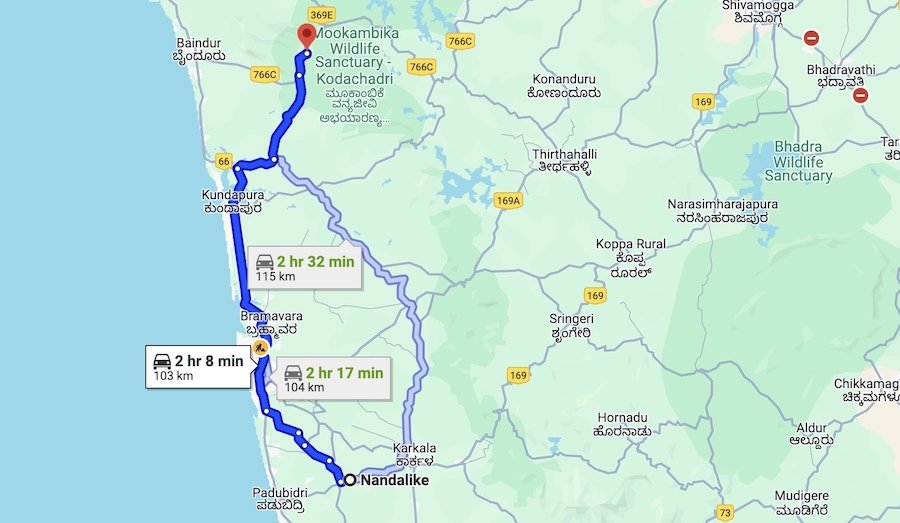Google Maps Sends Hordes of Tourists to the Wrong Spot, Google Accused of Ignoring Reports

Its navigation component dominates the mobile space, serving as the number one solution to get directions to a destination.
Hundreds of tourists from India trying to reach the Kollur Mookambika Temple end up approximately 100 kilometers (60 miles) away from their destinations due to what appears to be an error in Google Maps.
The issue appeared months ago when the first tourists were sent to a village called Nandalike. Locals claim this wasn't a new problem, as other tourists got lost before, but the number of people arriving in their remote village increased significantly in the last couple of months.
The issue is caused by a basic error and is easily fixable in Google Maps, but pretty much everybody claims Google is ignoring their requests to fix the map.
Google Maps incorrectly displays another small temple in Nandalike as Kollur Mookambika Temple. The issue was first discovered months ago, and local media reports that tourists are sometimes sent hundreds of kilometers away from the actual temple in Kollur.
I checked Google Maps, and the distance between the two destinations is approximately 100 km. Google Maps claims it takes approximately two hours to go from Nandalike to the correct location by car, as highlighted in this screenshot.
One Nadalike resident claims "hundreds of vehicles" arrived in their village in the past three months, explaining that Google must remove the incorrect listing as soon as possible. Drivers complain that determining the correct route when they are already on the road is more difficult because they typically travel at night. However, all drivers must pay attention to road signs and indicators that could indicate they are heading to an incorrect destination.
Locals and tourists claim they've already reported the issues to Google, but the incorrect information remains on Google Maps. The company hasn't issued a public comment on the error.
This isn't the first time Google Maps errors have caused confusion, leading drivers to the wrong destinations and eventually putting their lives at risk.
In late December, Google Maps navigation incorrectly directed one driver to an unfinished bridge, eventually causing the vehicle to plunge into a river. Authorities did not install barriers or warning signs, and because the vehicle was traveling at night, the driver couldn't observe the missing part of the bridge.
In January 2024, Google Maps suggested an alternative route to a dozen drivers returning from Las Vegas, taking them off the interstate and sending them to a route through the middle of the desert. All drivers followed the route for approximately three hours before reaching a dead-end, eventually deciding to return to the paved road. Google acknowledged the error and deleted the desert route from the map days later.
Authorities recommend that drivers prioritize common sense over Google Maps' navigation and, if a route looks dangerous, avoid it at all costs. Sticking with paved roads is often the safest option, especially when driving on unfamiliar routes and traveling at night.
The easiest way to tell if the destination suggested by Google Maps is the correct one is to do your homework and look up the address online. You must use the route preview screen to explore the destination and see if it's the correct address, especially when multiple locations match your search query.
Using more details in the search query could also help, so when you type a point of interest, such as a temple's name, you should include the village or the region where it's located.
Many users recommend alternative Google Maps applications, but most of these options often lack the accuracy and detailed information provided by Google's software. For example, Waze is specifically focused on traffic navigation and lacks an offline navigation mode, which could be a must-have option when traveling to remote villages and temples where a data connection might not be available.
Apple Maps has lost traction in the navigation space, and its maps are mainly accurate for US-based users, whereas international locations lack roads and points of interest, sometimes sending drivers to the middle of nowhere. It's still unclear if Apple's long-term objective remains improving Apple Maps at a global level, but the application barely received any major updates in the last year.
Drivers should also download offline maps in Google Maps before starting a new journey to a remote area. The application allows users to select the region they want to include in the offline map pack, with updates downloaded automatically when new information is added to the maps and the app is running in the background. The offline maps are also available on Android Auto and CarPlay once they are saved on your smartphone.
Nouvelles connexes


